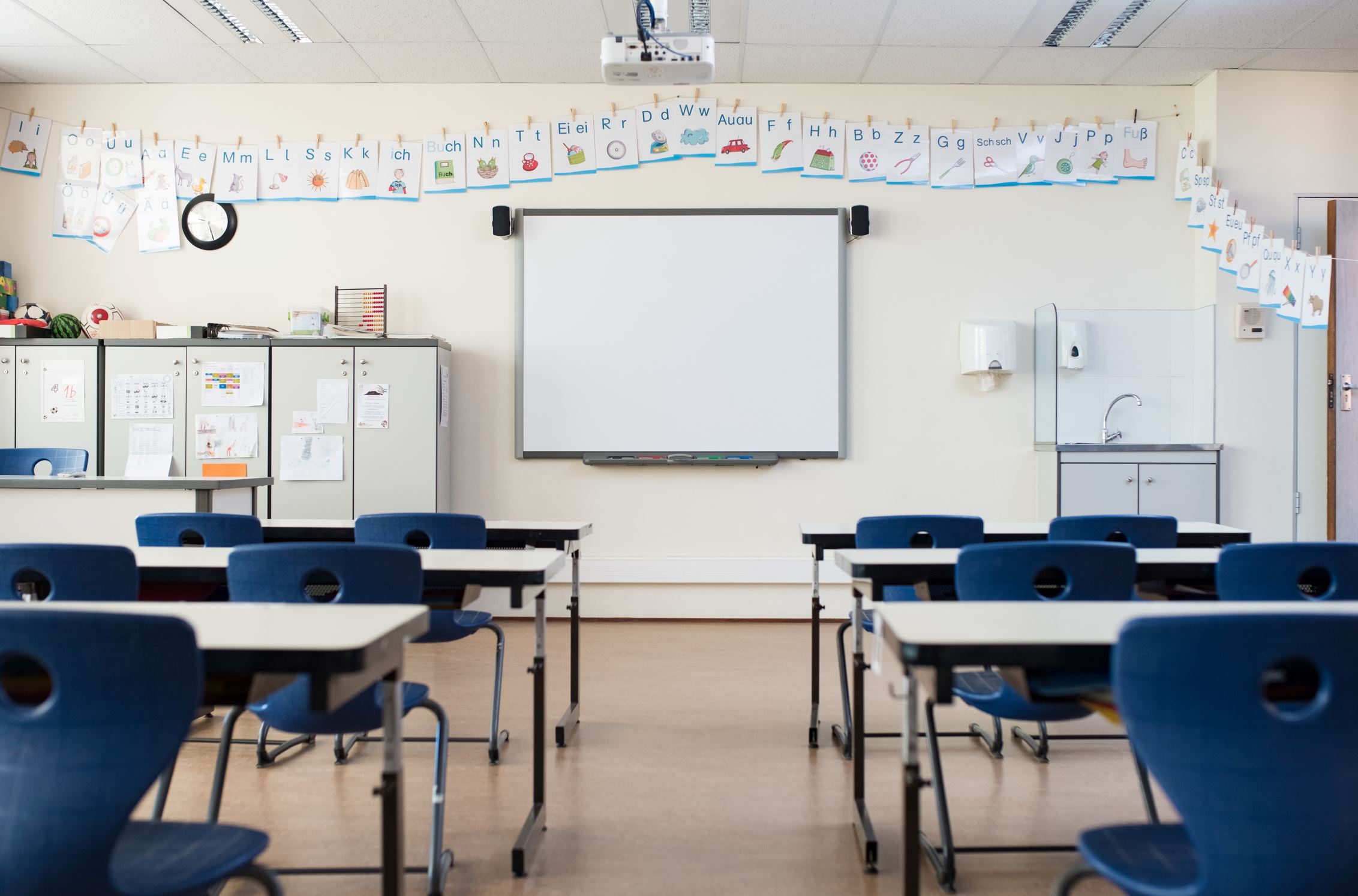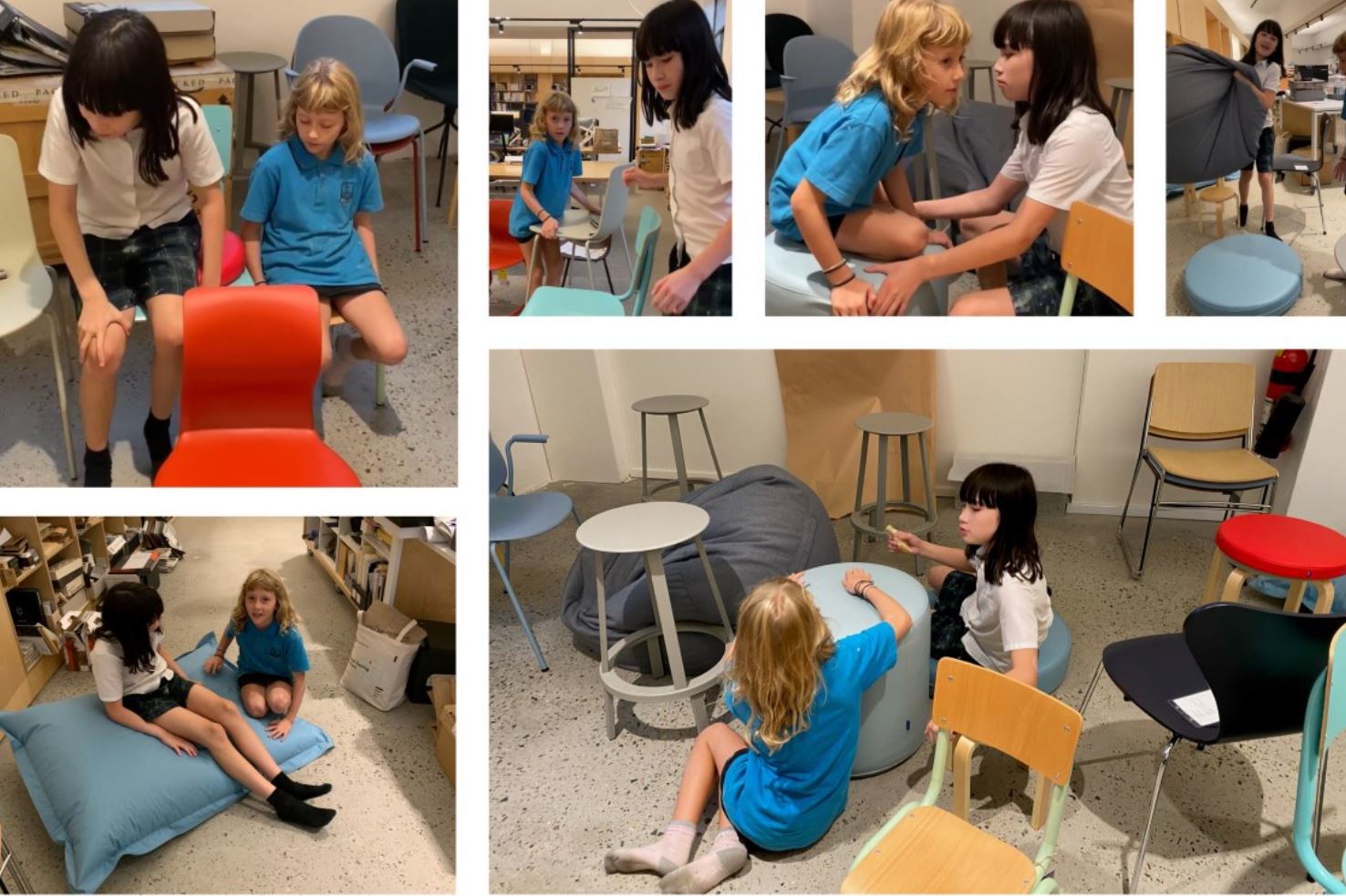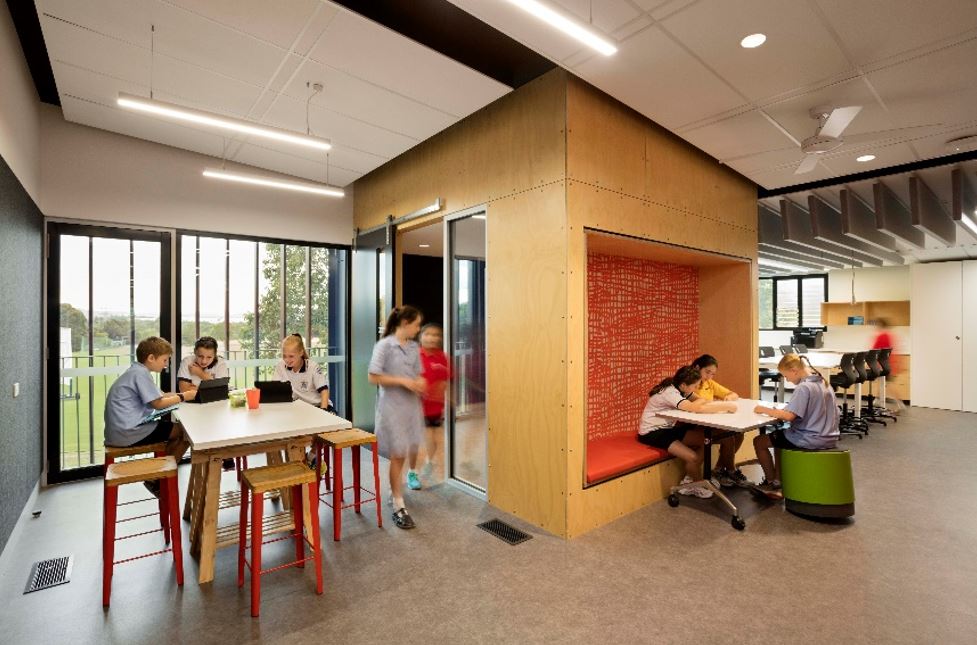The right types of furniture can support spatial flexibility and adaptability, and enhance student agency, objectives which most schools aspire to.
However, issues such as lack of understanding of the importance of furniture as a learning resource in tandem with a focus on immediate costs rather than long-term benefits can lead to reduced functionality of learning spaces.
This article discusses the need for all stakeholders involved in educational projects to understand the value of furniture and proposes how the process of furniture selection and procurement could be redefined to support better design and educational outcomes.
Today’s educational furniture offers many more opportunities than in the past when every classroom was furnished with an array of matching desks and chairs. Furniture can make a difference to a school experience, positively contributing to learning outcomes.
Diverse furniture settings supporting varied group sizes and activities have been found to enrich learning and teaching practices. In addition, greater choice in the learning settings offered by furniture can enhance student agency.
However, when building professionals and their clients engage in the functional and spatial design of schools, furniture can often be overlooked and merely considered an add-on to the design process.

Traditional classroom furniture.
Common challenges to furniture acquisition
1. Changing parameters
Projects are often delivered over a long period of time and many years can pass between initial master planning and building design, construction, and occupation.
During this period, change is not uncommon, whether related to school demographic shifts, project funding or changing personnel.
However, unless well managed, these changes can lead to design decisions that are detrimental to project (and teaching and learning) outcomes.
Having the right project team in place is critical for project success, but changes to key personnel during the process may adversely impact on earlier decisions by failing to appreciate why those decisions were made.
When stakeholder representatives or project design staff change, new members may have different ideas around space use and the functionality or connection between learning spaces.
Understanding critical design decisions that reflect a school’s context and budget are instrumental for continuity of design ideas and thoughtful adaptation to changing project requirements.
Amendments related to space, flexibility or overall project capacity are likely to influence furniture selections.
However, when this occurs late in the delivery process, adjustments to furniture procurement are often not cost effective nor possible within the time frame.
2. Siloed thinking
Project costs are generally reviewed at every stage of delivery where each component of a new building is checked relative to the overall budget. Furniture is often considered in isolation of the cost plan with a separate budget and sometimes its own procurement plan.
Often, cutting the furniture budget is seen to be an easy way to meet costs because furniture is incorrectly perceived to have no crucial impact on the building design.
3.Procurement processes
Procurement plans may accommodate insufficient furniture lead times which can lead to furniture selection based on timing rather than optimal suitability.
Ensuring that furniture is comfortable and suits building user’s needs requires testing by building occupants prior to ordering.
If this trial period is not factored into the procurement plan, the time required for this activity can put pressure on the overall program potentially resulting in a need for furniture re-selection.
There is also sometimes a perception that it might be cheaper to procure furniture through one supplier rather than multiple, which may limit the best possible selection for a project.
Although seemingly more efficient dealing with a single supplier, it can sometimes prove to be less cost effective as a lack of competitive pricing no longer guarantees value for money.
How can the process of furniture selection and procurement be improved?
In a climate where change is common, it is important to have the right process in place in order to achieve the best possible outcome.
Furniture selection and procurement needs to be genuinely integrated into project planning. It should be considered early in the process and its value emphasized until the project is completed.
In briefing, stakeholders should identify aspirations for furniture and how it can support different learning settings.
Undertaking furniture focussed workshops with all stakeholders, including school administrators, teachers, students, designers and project managers will clarify how furniture selections align to the project vision informing all team members in the process.
Testing furniture is an important part of the process. Staff and students should be given the opportunity to trial selected furniture in-situ enabling more contextual user feedback. Is the chair suited to the table? Is there enough clearance around it? Can items be easily rearranged for flexible use? Is there enough variety for different learning and teaching modes? Are they comfortable for different shapes and sizes? Are they sturdy enough for a school context?
After assessing observations, the design team will need to evaluate and potentially re-select items in response to the feedback. Further testing might be required to ensure alternatives undergo the same evaluation procedure.
As well as factoring in lead times, this testing process also needs to be considered as part of procurement timelines.

Students testing educational furniture at Hayball’s studio.
Other ways of considering furniture procurement
Building work is often delivered via a staged approach, yet this rarely happens with furniture. Staging furniture selection and acquisition would enable live testing within new spaces.
Providing a minimum scope of furniture for initial operation would give schools the opportunity to trial and evaluate in a real-world learning environment before committing to a full order.
Incremental furniture acquisition can give schools more agency in the selection of furniture, leaving room to make changes before exhausting the furniture budget.
This approach can be managed at tender stage by the inclusion of an appropriate provisional sum allowance for each stage of furniture procurement.
Leasing furniture could also be a cost-effective way for schools to test furniture before deciding what to buy. At this stage however, this service is only offered in the commercial market or overseas.
Another approach to enable testing in-situ prior to new buildings being completed is through prototype learning spaces.
These can be simple refurbishments of existing spaces, such as the Solais Sandpit at Domremy College, or new modular spaces, such as The Learning Project at Caulfield Grammar School, a temporary building which can be demounted and reassembled in different locations.
As not all schools would have the capacity to develop their own prototype learning spaces, perhaps these could be shared between schools to improve cost efficiencies?
A shift in thinking by all parties involved in the planning and construction of school buildings is required to recognise furniture as a critical resource to support diverse learning activities and highly effective educational spaces.
Indeed, it is now a fundamental component of the successful contemporary learning landscape.
The inclusion of furniture into building design needs to be well considered right from the start of a project and integrated thoughtfully into its planning and delivery processes.
This will ensure investment into new school buildings is well considered from macro to micro level to maximise learning outcomes and long-term benefits for all staff and students.














